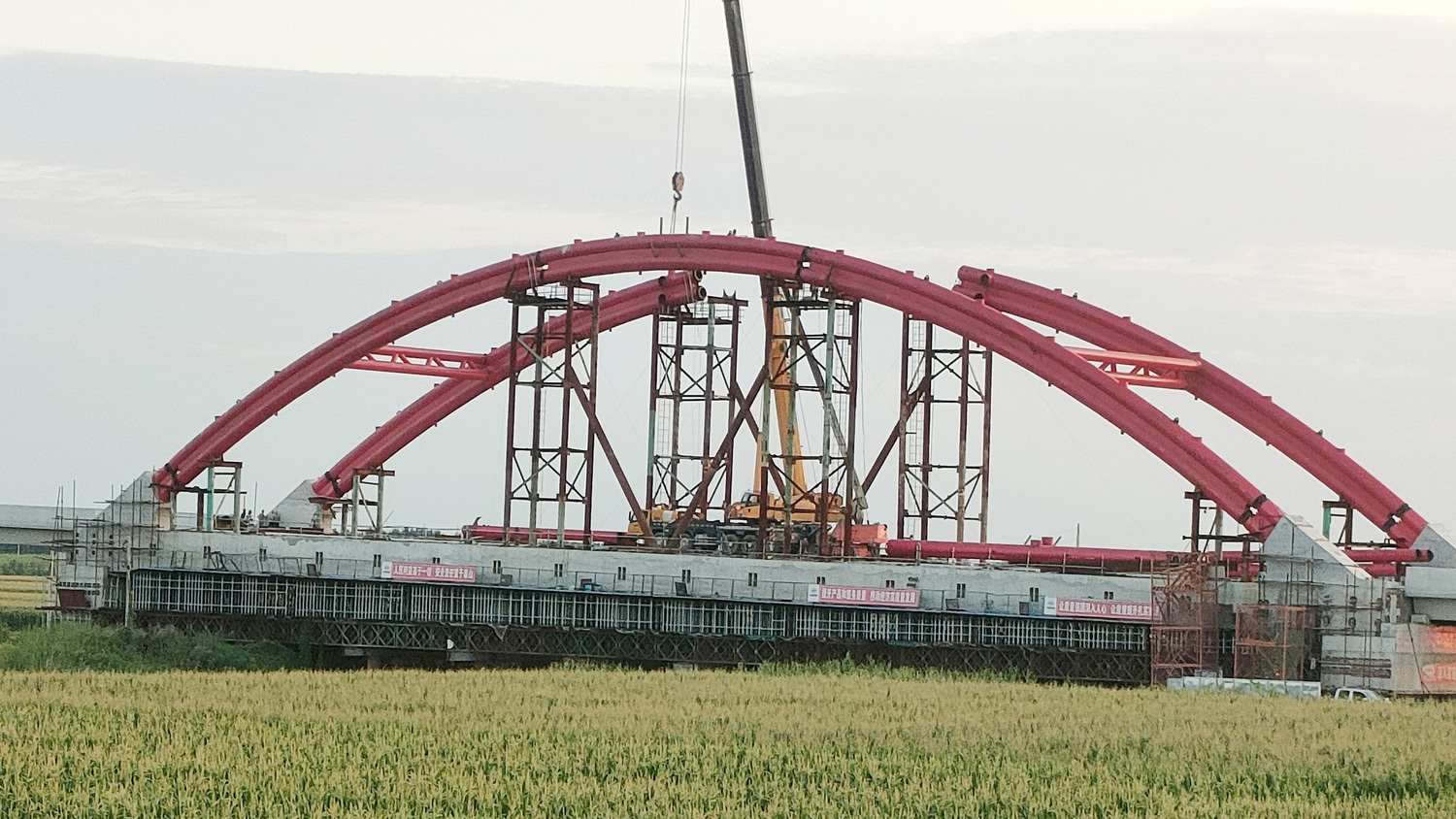Why Choosing the Best Steel Truss Bridge Can Transform Your Infrastructure
Jul 22,2025

Why Choosing the Best Steel Truss Bridge Can Transform Your Infrastructure
Table of Contents
- Introduction: The Role of Steel Truss Bridges in Modern Infrastructure
- Advantages of Steel Truss Bridges
- Key Design Considerations for Steel Truss Bridges
- Selecting the Right Materials for Durability and Strength
- Innovative Construction Techniques for Steel Truss Bridges
- Understanding Safety Standards in Bridge Construction
- Cost-Effectiveness of Steel Truss Bridges Over Time
- Case Studies: Successful Steel Truss Bridge Projects
- Conclusion: Making the Right Choice for Your Infrastructure
- Frequently Asked Questions (FAQs)
Introduction: The Role of Steel Truss Bridges in Modern Infrastructure
In the realm of civil engineering, the selection of an appropriate bridge type is crucial for the functionality, safety, and longevity of infrastructure. Steel truss bridges are among the most popular choices due to their remarkable strength-to-weight ratio, versatility, and aesthetic appeal. In this article, we will explore how choosing the best steel truss bridge can significantly transform your infrastructure projects, focusing on design, materials, safety, and cost considerations.
Advantages of Steel Truss Bridges
Steel truss bridges offer numerous advantages that make them a preferred choice for many engineers and architects. Here are some key benefits:
1. Strength and Durability
Steel is renowned for its high tensile strength, allowing truss bridges to withstand heavy loads and extreme weather conditions. The interconnected triangular framework distributes weight evenly, enhancing stability and minimizing stress on individual components.
2. Versatile Design Options
Steel truss bridges can be designed in various configurations to suit specific site requirements and aesthetic preferences. Whether you need a simple beam bridge or a more complex arch design, steel truss systems can accommodate diverse engineering demands.
3. Cost-Effectiveness in the Long Run
While the initial investment in steel truss construction may be higher than other materials, the longevity and low maintenance requirements of steel bridges lead to significant savings over time. Their durability reduces the frequency of repairs and replacements.
4. Environmental Sustainability
Steel is a recyclable material, making steel truss bridges an environmentally friendly option. This sustainability factor aligns with modern infrastructure goals that prioritize eco-conscious designs.
Key Design Considerations for Steel Truss Bridges
When designing a steel truss bridge, several factors must be taken into account to ensure optimal performance and safety.
1. Load Requirements
The bridge must be designed to handle the expected loads, including vehicular traffic, pedestrian use, and environmental factors such as wind and seismic activity. Advanced simulations and calculations can help determine these load requirements accurately.
2. Span Length and Geometry
The chosen span length affects the bridge's overall geometry and load distribution. Longer spans typically require more complex truss designs to maintain structural integrity. Understanding the specific site conditions is crucial for selecting the appropriate geometry.
3. Aesthetic Considerations
A well-designed bridge should not only be functional but also visually appealing. The aesthetic elements of a steel truss bridge can enhance the surrounding environment, making it a landmark feature within the community.
4. Maintenance and Accessibility
Designing for easy access during maintenance is vital for the longevity of the bridge. Consideration should be given to how maintenance crews will access critical components for inspections and repairs.
Selecting the Right Materials for Durability and Strength
The selection of materials is a key component in the construction of steel truss bridges. Different grades and types of steel can influence the performance and lifespan of the structure.
1. High-Strength Steel
Using high-strength steel can significantly reduce the weight of the bridge while maintaining load-bearing capabilities. This reduction in weight can lead to savings in foundation and support costs.
2. Corrosion-Resistant Coatings
Applying protective coatings can prevent rust and extend the life of steel components. These coatings are essential, especially in environments with high humidity or exposure to harsh chemicals.
3. Reinforcement Materials
Incorporating reinforcement materials such as fiberglass or carbon fiber can enhance the structural properties of the steel truss bridge, allowing for lighter designs without compromising safety.
Innovative Construction Techniques for Steel Truss Bridges
Advancements in construction techniques have revolutionized the way steel truss bridges are built, offering improved efficiency and safety.
1. Modular Construction
Modular construction techniques allow sections of the bridge to be fabricated off-site and assembled on-site. This approach reduces construction time and can minimize disruptions to the surrounding area.
2. Advanced Welding Techniques
Utilizing advanced welding methods ensures strong, durable connections between steel components. Techniques such as robotic welding provide higher precision and consistency in the manufacturing process.
3. Use of Drones for Inspection
The integration of drone technology in bridge inspection enables engineers to assess hard-to-reach areas safely and efficiently. This innovation can help identify maintenance needs before they become critical.
Understanding Safety Standards in Bridge Construction
Safety is paramount in the construction of steel truss bridges. Compliance with local and international safety standards is essential to ensure the integrity of the structure.
1. Load Testing Protocols
Before a bridge is opened to traffic, it must undergo rigorous load testing to verify its capacity to handle anticipated weights. This testing process is a critical step in safeguarding public safety.
2. Regular Inspections
Regular inspections throughout the bridge's lifespan are vital for identifying potential weaknesses or damage. Establishing a comprehensive inspection schedule can help maintain the bridge's safety and performance.
3. Incorporating Safety Features
Designing safety features such as guardrails, lighting, and anti-slip surfaces can enhance user safety and reduce the risk of accidents on the bridge.
Cost-Effectiveness of Steel Truss Bridges Over Time
While initial costs for steel truss bridges can be substantial, their long-term value is often superior to other bridge types. Here are some cost-related factors to consider:
1. Reduced Maintenance Costs
The inherent durability of steel reduces the need for frequent repairs, allowing maintenance budgets to be allocated to other critical infrastructure needs.
2. Longevity and Lifecycle Cost Analysis
Conducting a lifecycle cost analysis can provide insights into the long-term savings associated with steel truss bridges compared to alternative structures. These analyses consider initial costs, maintenance expenses, and potential replacement costs.
3. Value Engineering
Implementing value engineering principles during the design phase can optimize the bridge construction process, potentially lowering costs without compromising quality.
Case Studies: Successful Steel Truss Bridge Projects
Examining successful steel truss bridge projects can provide valuable insights into best practices and design considerations.
1. The San Francisco-Oakland Bay Bridge
This iconic bridge is an excellent example of a steel truss structure that has withstood the test of time. Its unique design and engineering innovations have made it a critical transportation artery in the region.
2. The Sydney Harbour Bridge
Known for its striking architecture, the Sydney Harbour Bridge combines aesthetic appeal with functional engineering. Its steel truss design has allowed it to remain a vital part of the city's infrastructure for decades.
3. The Øresund Bridge
Connecting Denmark and Sweden, the Øresund Bridge is a marvel of modern engineering, showcasing the versatility of steel truss designs in spanning large bodies of water and accommodating diverse traffic.
Conclusion: Making the Right Choice for Your Infrastructure
Choosing the best steel truss bridge for your infrastructure project can yield significant benefits in terms of strength, durability, and cost-effectiveness. Understanding the key design considerations, materials, and innovative construction techniques will empower you to make informed decisions that enhance the safety and longevity of your infrastructure. By investing in a quality steel truss bridge, you not only ensure the structural integrity of your project but also contribute to the overall progress and development of your community.
Frequently Asked Questions (FAQs)
1. What are the main benefits of steel truss bridges?
Steel truss bridges offer high strength, durability, versatility in design, and long-term cost savings.
2. How is a steel truss bridge designed?
The design process involves calculating load requirements, selecting materials, and considering aesthetic factors and maintenance accessibility.
3. What materials are used in steel truss bridge construction?
High-strength steel and corrosion-resistant coatings are commonly used, along with reinforcement materials to enhance structural integrity.
4. How often should steel truss bridges be inspected?
Regular inspections should be conducted, typically every one to five years, depending on local regulations and bridge conditions.
5. Can steel truss bridges be built in remote areas?
Yes, steel truss bridges can be constructed in remote locations, especially with modular construction techniques that allow for off-site fabrication.
Contact Us
E-mail :
183597530@qq.com
WhatsApp:
+86-13810577811
Address:
No. 4 Fengzhi Road, Binhe New District, Baotou Rare Earth High tech Zone, Inner Mongolia Autonomous Region









